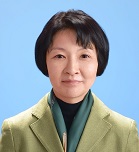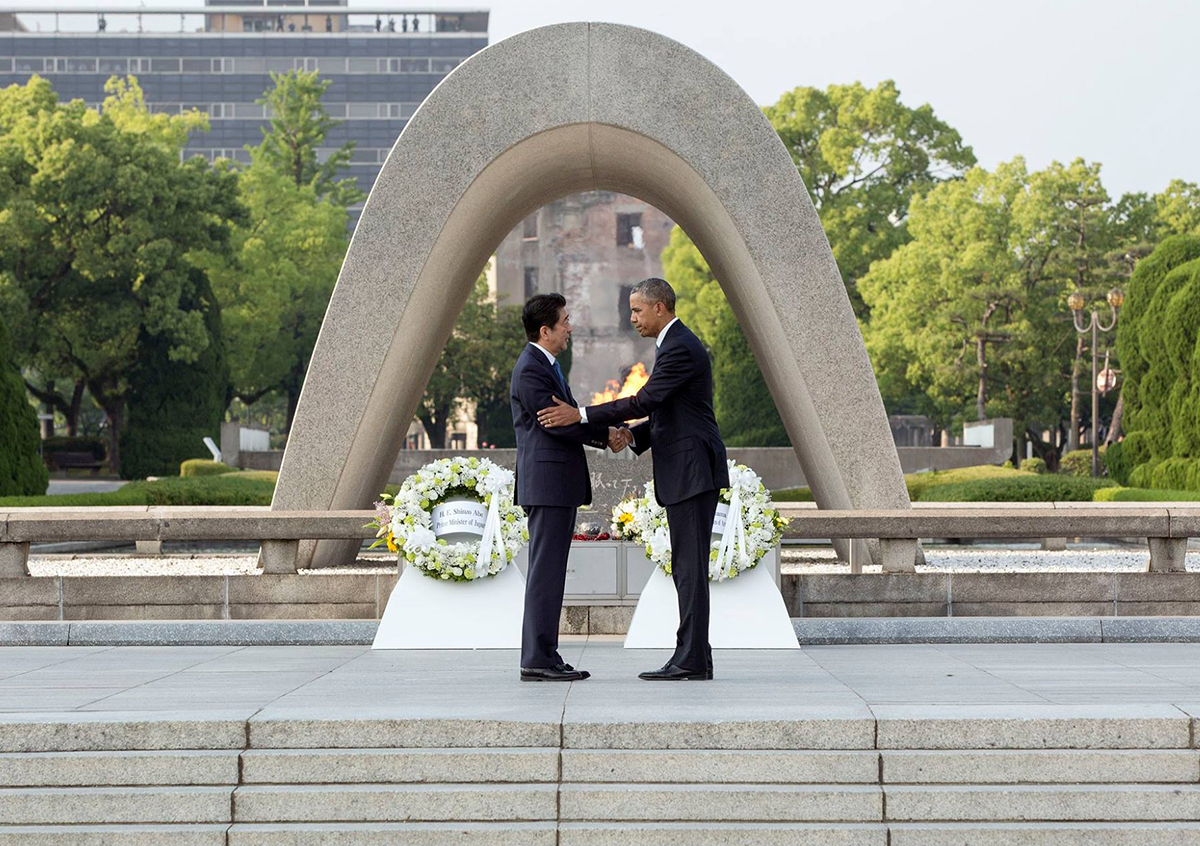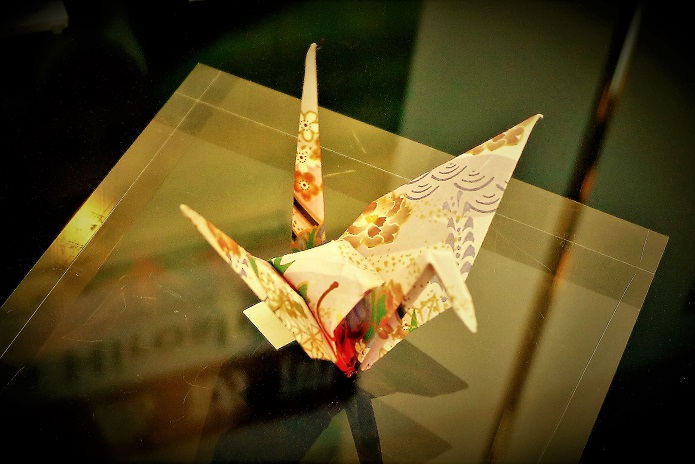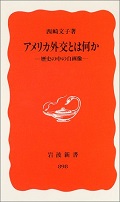Expectations versus reality for “a world without nuclear weapons”

Fumiko Nishizaki
Professor
Graduate School of Arts and Sciences
President Obama was the first leader of the country which dropped the atomic bomb to visit Hiroshima. While it was definitely a historic moment, it was also a disappointment in the aspect of making definitive progress towards “a world without nuclear weapons.” Alighting at this juncture of perspectives were two origami cranes made by the President himself. Professor Nishizaki investigates their significance from the viewpoint of the history of American politics and diplomacy.
The news media, both domestic and overseas, all hailed President Obama’s visit to Hiroshima on May 27, 2016 as a “historic moment.” Seventy-one years have passed since the atomic bombing, and it had been said that a visit to the bomb site would be a difficult thing to do. However, it turned out that the President was enthusiastically welcomed in Japan, and there was no significant criticism in the US, either.

However, the final assessments of his visit were varied. The representative of the atomic bomb victims, who highly praised Obama’s visit at first, later requested that he make another visit, saying that the results were not enough. Many people consider the visit’s practical significance to have been small while still praising President Obama for his courage. The underlying reasons for these views stem from the following facts regarding the visit: President Obama didn’t address America’s responsibility for the atomic bombing; he hasn’t developed a definitive roadmap leading to “a world without nuclear weapons”; and he didn’t include enough specific content relating to either one in his speech.
What is at the root of this skepticism beneath the surface of the overall welcoming mood?
First, there is a divergence between the “world without nuclear weapons” President Obama advocates and the expectations of the people at the bomb site. The speech he made in Prague in 2009 was groundbreaking. His statement that the US, as the only nuclear power to have used a nuclear weapon, has a moral responsibility to act received considerable attention. However, the top-priority issues in creating a “world without nuclear weapons” are nuclear non‐proliferation and the reinforcement of a management system for nuclear material. In this sense, President Obama’s nuclear policy follows the slow-and-steady principle, and it is not something that would change the current attitude of maintaining a nuclear deterrent. It is also well known that the Obama Administration does not at all favor the actions required that would result in the immediate abolishment of and a total ban on nuclear weapons.
The other issue is the complexity of the implications this visit had on the relationship between Japan and the United States. The leaders of both countries emphasized again in Hiroshima that the former enemy nations are now closely allied with each other. What is troublesome is that the alliance exists under the American “nuclear umbrella.” It is no wonder that some people feel a sense of incongruity about the fact that reinforcement of the Japan-US Alliance, which is based on nuclear deterrence, was a main point expressed in Hiroshima.
What is at the root of this skepticism beneath the surface of the overall welcoming mood?
First, there is a divergence between the “world without nuclear weapons” President Obama advocates and the expectations of the people at the bomb site. The speech he made in Prague in 2009 was groundbreaking. His statement that the US, as the only nuclear power to have used a nuclear weapon, has a moral responsibility to act received considerable attention. However, the top-priority issues in creating a “world without nuclear weapons” are nuclear non‐proliferation and the reinforcement of a management system for nuclear material. In this sense, President Obama’s nuclear policy follows the slow-and-steady principle, and it is not something that would change the current attitude of maintaining a nuclear deterrent. It is also well known that the Obama Administration does not at all favor the actions required that would result in the immediate abolishment of and a total ban on nuclear weapons.
The other issue is the complexity of the implications this visit had on the relationship between Japan and the United States. The leaders of both countries emphasized again in Hiroshima that the former enemy nations are now closely allied with each other. What is troublesome is that the alliance exists under the American “nuclear umbrella.” It is no wonder that some people feel a sense of incongruity about the fact that reinforcement of the Japan-US Alliance, which is based on nuclear deterrence, was a main point expressed in Hiroshima.

President Obama’s visit to Hiroshima would remove such ambiguity and pave the way for the construction of a new relationship between Japan and the US―I believe that was the hope of those who were at the bomb site. In Japan, the atomic bomb is widely considered to be a cruel weapon which indiscriminately massacred ordinary citizens. In the US, however, it is considered to be the “winning weapon” which brought the War to an end. Through his visit to Hiroshima, President Obama would overcome this gulf between Japan and the US by emphasizing the inhumanity of nuclear weapons with words that would resonate in the heart—I am sure that that is what many people were expecting.
Whether or not this expectation was realized depends on how we read the President’s speech. President Obama referred repeatedly to the enormity of the nuclear-generated damage and the suffering of the atomic bomb victims in his speech. On the other hand, he didn’t place the atomic bomb in the context of the relationship between Japan, the US, and the Cold War, but instead generalized it as a development of military technology and its overall effect on humanity and war. Whether you see Obama’s speech as expressing his utmost condolences as President of the United States or dodging responsibility and avoiding the essence of the problem will vary widely, depending on the individual.
The fact that President Obama brought orizuru, paper cranes that he himself had folded, made quite an impression. He said he was moved by the story of Sadako Sasaki, a young girl who passed away while making senbazuru, one thousand orizuru cranes tied together with string to wish for happiness and a long life. What did Obama see and feel in Hiroshima? While also paying attention to the discrepancy between the US, which continues on with a nuclear modernization program, and its leader, who expressed his thoughts with the orizuru cranes, I will continue studying the past and present relationship between Japan and the US.
Whether or not this expectation was realized depends on how we read the President’s speech. President Obama referred repeatedly to the enormity of the nuclear-generated damage and the suffering of the atomic bomb victims in his speech. On the other hand, he didn’t place the atomic bomb in the context of the relationship between Japan, the US, and the Cold War, but instead generalized it as a development of military technology and its overall effect on humanity and war. Whether you see Obama’s speech as expressing his utmost condolences as President of the United States or dodging responsibility and avoiding the essence of the problem will vary widely, depending on the individual.
The fact that President Obama brought orizuru, paper cranes that he himself had folded, made quite an impression. He said he was moved by the story of Sadako Sasaki, a young girl who passed away while making senbazuru, one thousand orizuru cranes tied together with string to wish for happiness and a long life. What did Obama see and feel in Hiroshima? While also paying attention to the discrepancy between the US, which continues on with a nuclear modernization program, and its leader, who expressed his thoughts with the orizuru cranes, I will continue studying the past and present relationship between Japan and the US.
Question: Is your research useful?
Answer: I’m afraid that the question of whether or not my research is useful trivializes learning, because I want to believe everything which makes humanity richer should be considered useful.
(We have asked twelve professors who contributed articles to this issue to answer the above question in 60 words or fewer. Professor Nishizaki's response appears here.)
Note: This article was originally printed in Tansei 33 (Japanese language only).
(1) Photo credit: さかおり, Barack Obama folded paper crane. Hiroshima Peace Memorial Museum, CC BY-SA 4.0
Answer: I’m afraid that the question of whether or not my research is useful trivializes learning, because I want to believe everything which makes humanity richer should be considered useful.
(We have asked twelve professors who contributed articles to this issue to answer the above question in 60 words or fewer. Professor Nishizaki's response appears here.)
Note: This article was originally printed in Tansei 33 (Japanese language only).
(1) Photo credit: さかおり, Barack Obama folded paper crane. Hiroshima Peace Memorial Museum, CC BY-SA 4.0







